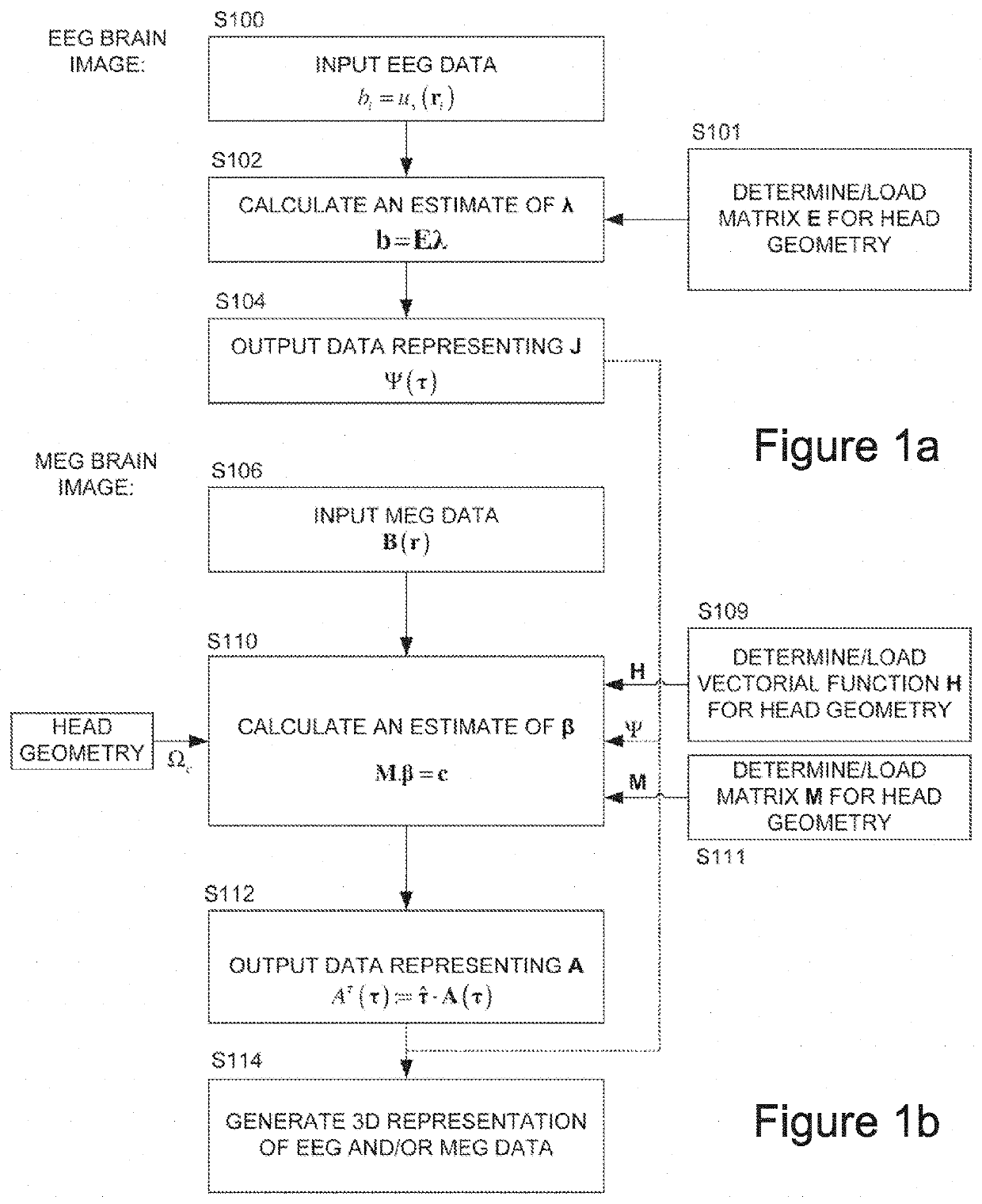Signal processing methods
a technology of signal processing and signal, applied in the field of signal processing methods, can solve the problems of high ill-posed inverse problem and inability to solve the above equations
- Summary
- Abstract
- Description
- Claims
- Application Information
AI Technical Summary
Benefits of technology
Problems solved by technology
Method used
Image
Examples
Embodiment Construction
1. Framework
[0057]In the following description we denote a domain and its conductivity by Ω⊂R3 and σ respectively. Let the bounded domain Ωc represent the cerebrum, which has conductivity σc. A shell Ωƒ with conductivity σƒ, representing the cerebrospinal fluid (CSF), surrounds the domain Ωc. The CSF is surrounded by the skull characterized by the domain Ωb with conductivity σb. Finally, the skull is surrounded by the scalp, which is modelled as a shell Ωs with conductivity σs. The domain exterior to the head is denoted by Ωe which is not conductive. The permeability of all domains is equal to the permeability μ0 of empty space. Let JP(τ), τ∈Ωc, denote the current which is supported within the cerebrum Ωc. For the above situation of arbitrary geometry and arbitrary current, it is shown in A S Fokas (J. R. Soc. Interface, 6:479-488, 2009, ibid) that the irrotational part of the current, which is denoted by the scalar function Ψ(τ), contributes to both the electric potential on the sc...
PUM
 Login to View More
Login to View More Abstract
Description
Claims
Application Information
 Login to View More
Login to View More - R&D
- Intellectual Property
- Life Sciences
- Materials
- Tech Scout
- Unparalleled Data Quality
- Higher Quality Content
- 60% Fewer Hallucinations
Browse by: Latest US Patents, China's latest patents, Technical Efficacy Thesaurus, Application Domain, Technology Topic, Popular Technical Reports.
© 2025 PatSnap. All rights reserved.Legal|Privacy policy|Modern Slavery Act Transparency Statement|Sitemap|About US| Contact US: help@patsnap.com



